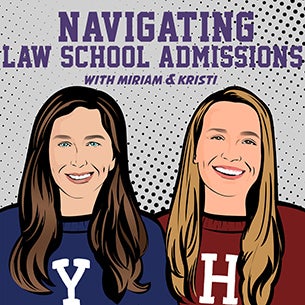On this webpage, you will find our advice on when to apply as well as guidance regarding addenda and general advice about preparing for the law school admissions process.

Application Timeline
Each year, the application for Fall semester enrollment opens in mid-September, and closes in mid-February. We aim to notify all applicants of their admission decision by early April.
Is it advantageous to apply early?
No. Strong applications rise no matter when they are submitted. A weaker application is no more likely to get an admit decision just because it has an early submission date.
We have three rounds of admission in January, February, and March (rather than ongoing rolling admissions). Throughout the fall months, we wait to see the pool develop. By the time we begin releasing decisions in January, we have a strong sense of the caliber of the pool.
The artificial construct of “early” seems to push applicants to rush and submit before their applications are fully polished—we encourage you to apply when your application is fully demonstrative of your potential.
Know this, applicants: there is no magic definition of “early” that will change the trajectory of your file.
Podcast Advice

Navigating Law School Admissions with Miriam & Kristi
Miriam Ingber (Associate Dean of Admissions and Financial Aid at Yale Law School) and Kristi Jobson (Assistant Dean for Admissions at Harvard Law School) provide candid, accurate, and straightforward advice about law school admissions — direct from the source. They will be joined by guest stars from other law schools to discuss application timing, letters of recommendation, personal statements, and more.
Additional Application Components
Addendum
We encourage you to provide any relevant information that may be helpful to us in making an informed decision on your candidacy. If you need additional space beyond the application questions and required materials, you may include a brief addendum.
An addendum is a brief statement, typically one to two paragraphs long, that offers additional context to any application component or addresses matters that you deem require elaboration.
Launching to 1L
Curious about more than just the application components? If you’re exploring the idea of law school, considering where to apply, or simply wondering how the process works, you’ll find guidance here that can help you get started as you “launch” to 1L year.
-
How to Make the Most Out of a Law School Event
We share our advice on how to prepare for law-related online and in-person events.
-
Tips for Building Your Law School List
We discuss how applicants may approach deciding where to apply. Read more for things to consider when building your law school list.
-
5 Tips for High Schoolers Thinking About Law School
We get a fair number of inquiries from students who are thinking about law school in high school, or even earlier.
Here are a few tips from our office if you think law school might be of interest to you in the future.